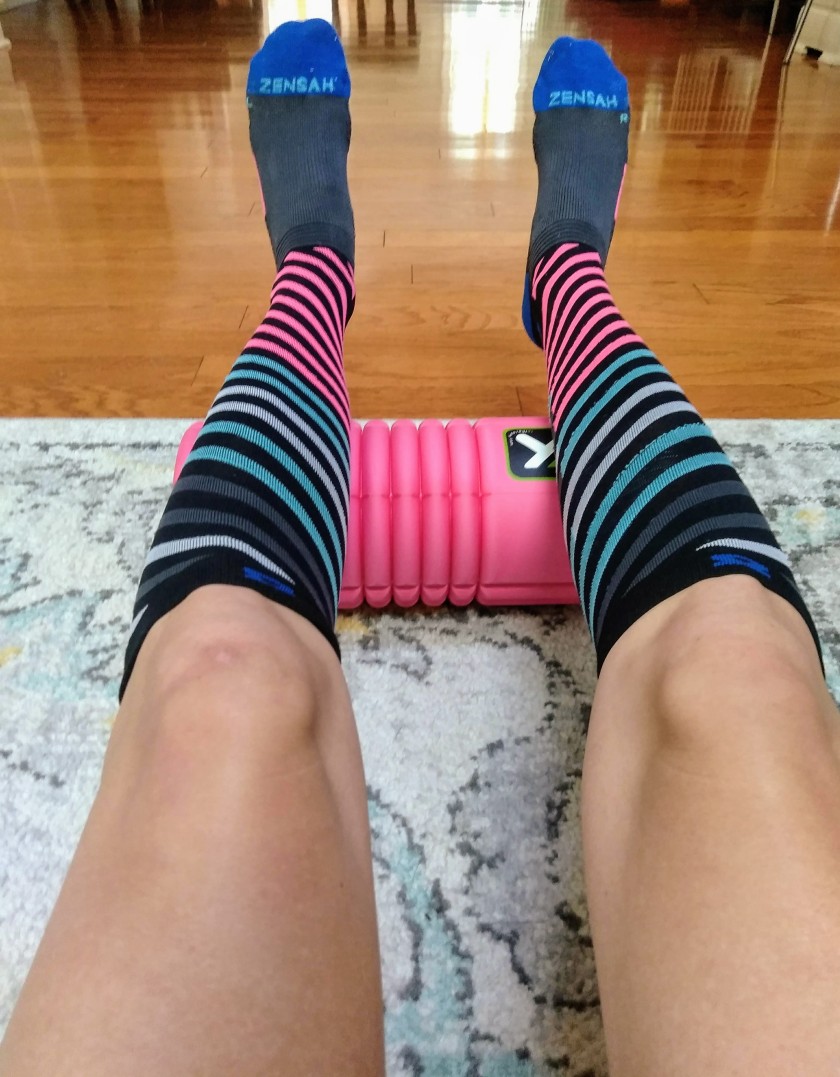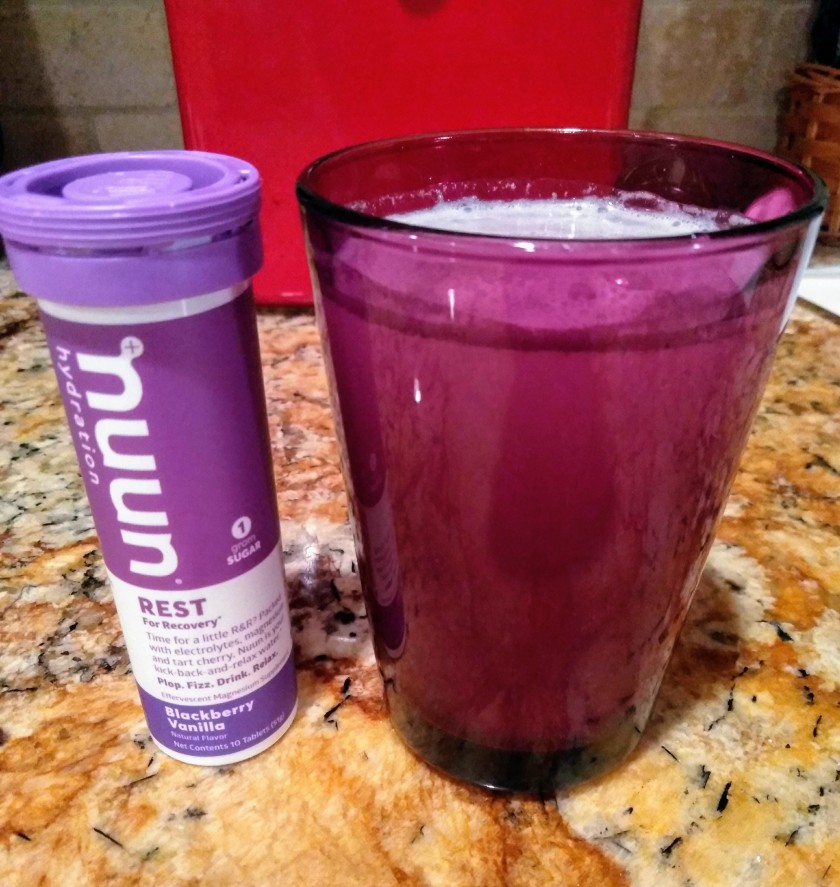When you finish a hard run, do you immediately immerse your lower body into an ice bath, cringing but nonetheless telling yourself you’ll feel better afterwards? Or do you chug a protein shake after a long run to help you recover? Are you a big fan of sports compression clothing? Have you ever wondered if any of the multitude of recovery products and services really “work” meaning they truly help your body recover faster or more efficiently? If so, you might enjoy reading Christie Aschwanden’s book, “Good To Go: What the Athlete in All of Us Can Learn From the Strange Science of Recovery.”
As the saying goes, Christie Aschwanden wears many hats. In addition to being an author and contributing writer for dozens of publications, frequent speaker at writer’s workshops and journalism conferences, she is an athlete who has competed on the Team Rossignol Nordic ski racing squad, in addition to being a runner and cyclist. I think her scientific background along with being an athlete herself gives her a distinct advantage in writing a book like this and doing it so thoroughly and completely.

Recovery (from athletic activity) has become a huge buzz word in recent years, as Aschwanden points out in her book. There are entire centers devoted solely to athlete recovery now across the country. I did a quick search for my area and two places came up; one was an orthopedic “performance” center that offers things like myofascial cupping, dry needling, NormaTec recovery boots among others and the other was a place that called itself a recovery center but offered other services like posture work and pain relief in addition to cryotherapy wraps and NormaTec recovery boots.
But let me back up and start at the beginning of the book. Aschwanden begins by explaining how the book came to be and how and why she wanted to find out all she could about recovery and the science behind it. She makes it clear that many scientific studies on athletes are flawed. As you may already be aware, many athletic studies are based on small groups of men and as such may not be relevant to women or even other men in general. I like how exercise physiologist and author of many scientific publications and the book, “Roar: How to Match Your Food and Fitness to Your Unique Female Physiology for Optimum Performance, Great Health, and a Strong, Lean Body for Life” Stacy Sims puts it: “Women are not small men. Stop eating and training like one.”
Next, Aschwanden tells the story behind Gatorade and discusses hydration and how the balance has shifted to one where athletes are so worried about being dehydrated that they are dying of hyponatremia, which is when you drink too much water and your electrolytes become unbalanced. In perfect succession, she tells the story of how PowerBar came to be and how so many other companies followed suit and the industry exploded with recovery drinks, bars, and other high-protein concoctions. The bottom line that Aschwanden arrives at for both hydration and nutrition is that we’re over-complicating matters. We should be drinking to thirst and have a meal with real food (!) that’s a mix of mostly carbohydrates and protein after a workout. Our bodies will adjust and rebound on their own unless you’re in a multi-day event like the Tour de France and you have a tough race the following day.

The next chapters are on ice baths and cryotherapy, infrared saunas, massage therapy, foam rollers, and compression gear including compression boots. Ice baths seem to be a bit complicated in that they may not be a good idea after strength training or if you’re in a building phase of training, but if you’re only interested in short-term benefits, then go for it. There’s evidence that icing may inhibit an athlete’s body’s ability to adapt long-term on its own but other research shows by reducing pain and soreness, icing may allow an athlete to train again sooner, so there are somewhat mixed findings at this point. Once again, Aschwanden concludes that perhaps we’re over-thinking these recovery aids as well since all we really need to do is gentle exercise to naturally promote blood flow through tired muscles and speed up the flow of by-products of intense exercise.
Perhaps the most important chapter in the book is chapter 7 titled “The Rest Cure.” I’ll cut to the chase here and put it simply. The single most important thing you can do for yourself to help with recovery is get adequate and restful sleep. She gives many examples of professional athletes and how they’ve come to realize how important sleep is and have made it a priority in their lives. You can be doing a half a dozen different things to aid in recovery but if you’re not getting enough sleep, nothing else matters. Your body needs sleep to repair and re-build muscles and if you’re not getting enough time for that to happen, your performance will eventually suffer.

Aschwanden discusses the multi-billion dollar supplement industry, largely lead by protein powders. Not only are most of these supplements completely unnecessary for most average athletes, they can cost hundreds of dollars in a single month, and even worse many are laced with heavy metals like arsenic and lead. Sure, you can look them up on websites that verify some supplements (although not all of them on the market by a long shot), but there’s still no guarantee that you’re getting what you think you are or that it will do what you think it’s supposed to. We all want to believe drinking a protein shake after a workout will give us that boost to help us be stronger or recovery faster, but the truth is, it’s all such a marketing scam, it’s difficult to know what to trust as solid, scientifically-based information rather than hearsay from a coach, trainer, or other athlete often with little to no scientific background.
The book ends with a discussion on the placebo effect and what a powerful thing this can be. For example, in scientific studies on ice baths, it’s pretty much impossible to fake an ice bath, so obviously everyone in the study that gets an ice bath knows it and the people in the study that aren’t getting the ice bath also know it. However, if you feel in your heart that ice baths have always “worked” for you, whether that means it makes you feel like you’re not as sore the next day or you can work out harder or more intensely the next day following an ice bath, that will effect your judgement and lead you to be biased if you’re in a study on ice baths. She concludes at the end of the book that soothing your muscles and body in a way that makes you feel better emotionally “even if nothing is actually changing in a physiological sense” provides a ritual for taking care of yourself and being proactive in your health, and helps you focus on rest.
Her bottom line seems to be as long as a recovery tool isn’t causing actual harm or costing you large sums of money, who really cares if it’s not doing much for your body in a way that’s been scientifically proven. So if you love to get massages regularly, use compression tights after a tough run, and sit in an infrared sauna once a month, go for it. The mind is truly a powerful thing and often if we think something makes us feel better, then in the end, that’s probably all that matters. I love the quote by Camille Herron who set a world record when she ran her first 100-mile run, who says she recovers by feel and keeps it simple. She said, “I am really in tune with my body, and I pay attention to what I’m feeling.” If she craves a cheeseburger after a marathon or ultra, that’s what she eats. Keep it simple.
One thing covered in the book that I didn’t discuss here is float tanks, which I’ve tried myself. If you want to read my experience with that, here’s the link: I Tried a Sensory Deprivation Tank and Here’s What it Was Like For Me. My thoughts on Stacy Sims’ book are here: Review of “Roar: How to Match Your Food and Fitness to Your Unique Female Physiology for Optimum Performance, Great Health, and a Strong, Lean Body for Life” by Stacy Sims and Selene Yeager.
What about you? What recovery tools do you feel are important for you? Are there any recovery aids that you haven’t tried but would like to?
Happy running!
Donna

Brilliant! This fits very well with some reading I’ve done recently about placebo effects in depression treatment.
LikeLiked by 1 person
I really enjoyed this book. The placebo effects are probably underestimated in many studies but they can have such an immense effect on our bodies and our minds.
LikeLike
This sounds super interesting and you gave me a great idea. I said I wanted to read more non fiction this year and I think I’ll make it books about running:)
LikeLiked by 1 person
Awesome! I hope you enjoy this book as much as I did!
LikeLiked by 1 person
I agree – if it works and doesn’t break the bank, go for it.
I nice inexpensive recovery drink is chocolate milk. It has carbs, fat, protein and most of us love it. I haven’t done much research other than reading a few articles or mentions. But it seems to make sense, won’t hurt you and is cheaper than MuscleMilk.
LikeLiked by 1 person
Very true! Chocolate milk is great for recovery. I love when they have chocolate milk after races.
LikeLike
I was just going to ask about float tanks and then I came upon your final paragraph. I wonder why she didn’t mention those. Maybe they’re not ubiquitous enough to include? I think they work, but I think I mentioned that in your post about it. Happy new year!
LikeLiked by 1 person
Sorry, I didn’t make that clear. She did discuss float tanks in her book. She was personally a fan of them, but again, the scientific studies to back up any “proof” that they work is lacking. Happy New Year to you as well!
LikeLiked by 1 person
This will go in my never ending list of books that I should read. I’ve never really experience any benefits from ice baths after long runs.
LikeLiked by 1 person
I know what you mean! It’s hard to keep up. I stopped taking ice baths years ago because I didn’t see any benefits either. Plus, they suck!
LikeLiked by 1 person
Yeah! I prefer to save the ice for margaritas. 😉 Actually, your comment just reminded me that there were a couple of books mentioned on the Marathon Training Academy podcast that I want to check out.
LikeLiked by 1 person
I’ve gotten a lot of good book recommendations from the MTA podcast. I’ve really liked most of them.
LikeLiked by 1 person
I’m pretty sure that Wendy @ Takingthelongwayhome also reviewed this book. I really should read it because I’m always harping on recovery, LOL!
There are many things I haven’t tried yet, or things I’d love to do on a regular basis but just don’t have the money for. Then again, I’m not a professional athlete, thank goodness, because then I’d be really poor!
Never tried ice baths. I prefer heat for recovery!
LikeLiked by 1 person
Ice baths are just miserable. Plus I didn’t feel like they helped me any. I also prefer heat for recovery.
LikeLiked by 1 person
This sounds like a book that I must read. It appeals to the scientist in me. I agree with her take on nutrition. I have made it a rule that I no longer eat anything but “real food” – no bars, gels, gu, beans, or blocks, either before, during, or after a run. I was also never a fan of ice baths either, but once, after a tough marathon in South Dakota, some friends and I did submerge our lower bodies in a very chilly stream! It was fun and felt good.
LikeLiked by 1 person
Yes, as a scientist myself, that aspect of the book really appealed to me. I think you’d like it as well.
LikeLiked by 1 person